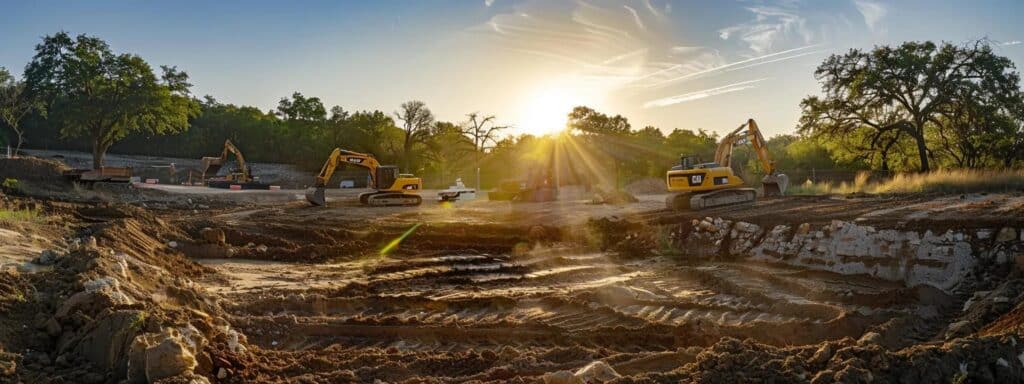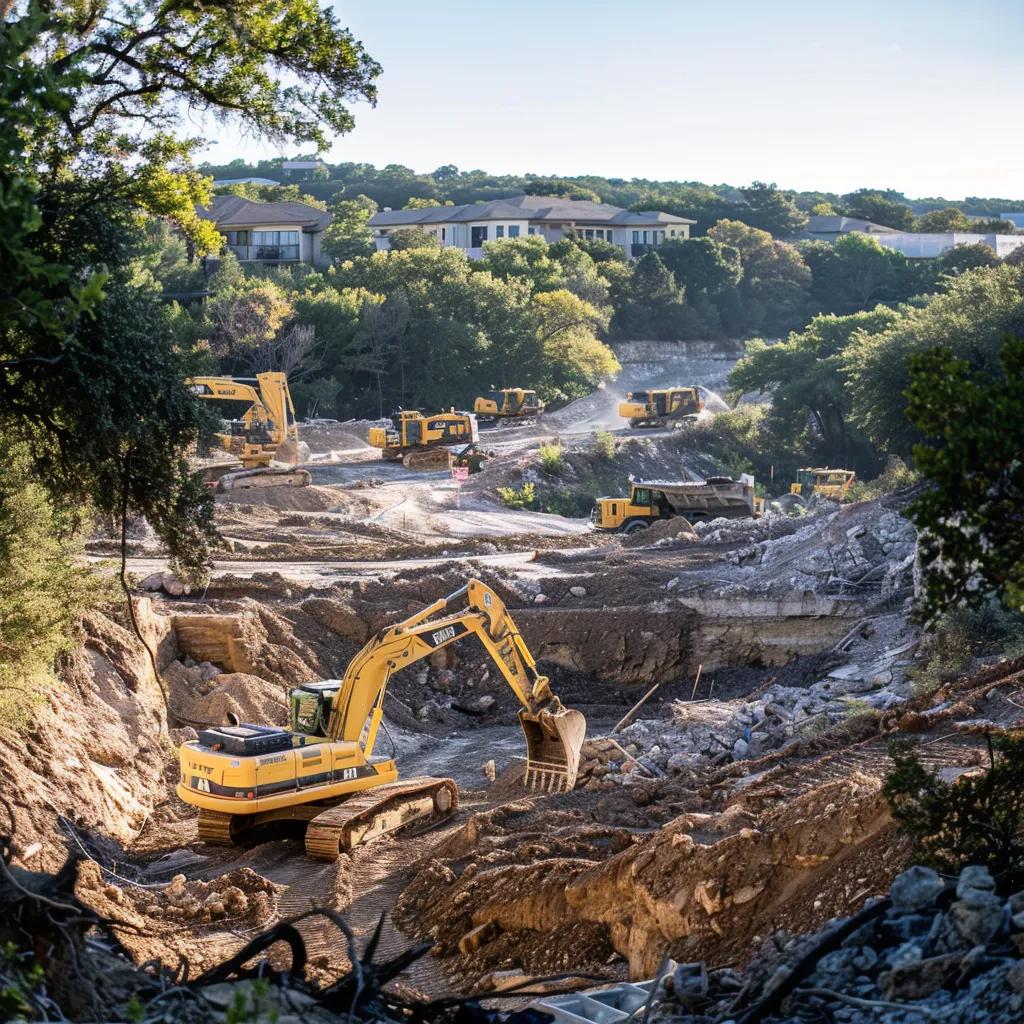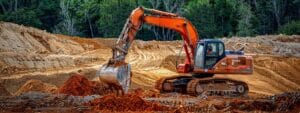Best Practices for Excavation and Landscaping in Wimberley Texas
Wimberley, in Central Texas, features a mix of terrain, soil types, and weather conditions that influence excavation and landscaping projects. Homeowners need to assess site conditions, choose the right equipment, and comply with local regulations. Working with a general contractor near me can provide additional expertise and ensure local codes are met. This guide outlines best practices for efficient digging, robust landscaping, sustainable practices, effective design, and regulatory compliance. In many cases, a trusted general_contractor plays a pivotal role in managing project details and streamlining communication among stakeholders. Following these strategies helps ensure safety, project success, and customer satisfaction.
Optimize Your Excavation Techniques for Wimberley Landscapes

Successful landscaping begins with proper excavation. Contractors must survey the site—examining soil density, moisture, and rock presence—to choose suitable methods and machinery such as directional boring and heavy equipment like excavators and bobcats.
Assessing Site Conditions Before Excavation Starts
Contractors start by measuring soil composition, drainage patterns, and underground utilities using tools like ground-penetrating radar. This assessment helps estimate costs, plan for load-bearing requirements for patios, retaining walls, and driveways, and decide whether average or precise digging techniques are necessary. In Wimberley, limestone and clay variations require customized planning to avoid surprises.
Choosing the Right Equipment for Efficient Digging
Selecting appropriate machinery is crucial. In Wimberley, contractors use backhoes, skid steers, jackhammers, and directional boring equipment based on soil type. Modern equipment reduces fuel consumption, minimizes manual labor, and improves safety. Additionally, portable sump pumps may be used to manage water during excavation, ensuring continuous progress.
Understanding Local Soil Types and Their Impact
Wimberley’s soils range from well-draining sands to clay-heavy substrates with limestone. Sandy soils drain quickly but may shift under loads, while clay soils retain water and require effective drainage and added fill dirt. Knowledge of these characteristics helps in planning retaining walls, drainage systems, and foundations using techniques like directional boring to minimize disruption.
Implementing Safety Measures During Excavation
Safety is essential. Contractors develop site-specific safety plans, using shoring, exclusion zones, and continuous soil monitoring. Equipment like emergency sump pumps and regular inspections with automated sensors protect both workers—using helmets, eyewear, and work boots—and the property’s structural integrity.
Solutions for Drainage Challenges in Wimberley
Proper drainage is critical in a region with fluctuating weather. Installing sump pumps, French drains, and catch basins helps prevent water accumulation and foundation damage. Combining local knowledge with modern drainage solutions improves soil stability and reduces repair costs over time.
Incorporating Sustainable Practices in Excavation
Sustainable excavation minimizes soil disturbance and promotes recycling of excavated material. Contractors now use eco-friendly equipment, recycle soil for garden beds or natural berms, and adhere to local environmental regulations. These practices often lead to long-term cost savings while protecting the environment.
Transform Your Garden With Professional Landscaping
A professionally designed landscape enhances aesthetics, property value, and sustainability. In Wimberley, designers consider climate and soil conditions to create gardens that thrive year-round. Collaboration between contractors and homeowners yields solutions that address water conservation, erosion, and seasonal challenges.
Selecting the Best Plants for Wimberley Climate
Plants in Wimberley must tolerate hot summers, occasional cold snaps, and variable moisture. Designers select drought-resistant, native, or acclimated species such as Texas sage, lantana, and blackfoot daisy. Such selections promote biodiversity, reduce water use, and require minimal maintenance, ensuring a vibrant, low-maintenance garden.
Designing Layouts That Enhance Outdoor Aesthetics
A successful garden design uses symmetry, balance, and focal points to guide visitors’ eyes. Winding pathways or decorative water features can serve as centerpieces. Designs account for sunlight, shade, and efficient use of space, while complementing the home’s architectural style and promoting easy maintenance throughout seasonal changes.
Implementing Irrigation Systems for Optimal Growth
Drip irrigation systems deliver water directly to plant roots, conserving water and preventing overwatering that leads to erosion. Smart irrigation controllers adjust schedules based on local weather conditions to ensure uniform growth and reduce maintenance needs.
Using Decorative Elements to Elevate Your Space
Decorative elements like stone pathways, sculptures, and lighting add beauty and function to a garden. In Wimberley’s rugged Texas Hill Country, the use of native rocks, reclaimed wood, or eco-friendly composites can enhance the natural vibe while reducing upkeep. These features create distinct gathering spots and focal areas for an inviting outdoor retreat.
Regular Maintenance Tips for Lasting Landscapes
Routine tasks such as pruning, mulching, and pest control maintain plant health and visual appeal. Homeowners should schedule regular soil tests, adjust irrigation, and inspect systems for leaks. Proactive maintenance preserves the initial investment and prevents minor issues from evolving into major problems.
Choosing Hardscape Features That Complement Nature
Hardscapes like retaining walls, patios, and decorative fences add structure and functionality. In Wimberley, materials such as natural gravel, stone, and sustainably sourced timber blend with the environment while providing durable, low-maintenance surfaces. A well-integrated hardscape enhances property value and creates smooth transitions between built and natural elements.
Ensure Compliance With Local Excavation Regulations

Compliance with local codes and environmental regulations is vital to avoid delays and legal penalties. In Wimberley, understanding zoning laws, building codes, and environmental requirements ensures that projects proceed safely and legally while preserving community character.
Researching Wimberley’s Building Codes and Permits
Contractors must thoroughly research local building codes via municipal planning offices or government websites. Permits specify excavation depth, material types, and safety measures. Early and accurate research prevents fines, project suspensions, and unnecessary delays.
Working With Local Authorities on Project Approvals
Early engagement with planners and inspectors clarifies project requirements and zoning restrictions. This cooperation streamlines permit processes and allows timely incorporation of any needed changes. Open communication mitigates budget and timeline risks during approvals.
Understanding Environmental Regulations for Landscaping
Beyond building codes, environmental regulations focus on water conservation, soil quality, and protecting native vegetation. Contractors must adopt sustainable practices—such as using permeable pavements and erosion control measures—to protect both the project site and the broader ecosystem.
Planning for Potential Erosion Control Measures
Contractors design erosion control plans using retaining walls, proper grading, and erosion control blankets to protect both new landscaping and existing structures. Effective planning preserves property stability and minimizes soil loss, particularly on steep slopes or areas prone to heavy rains.
Navigating Zoning Laws for Residential Projects
Zoning laws in Wimberley dictate building setbacks, structure heights, and land use. Contractors review these ordinances and adjust designs accordingly to prevent legal disputes and maintain neighborhood character.
Documenting Your Work to Stay Compliant
Thorough documentation—including permits, site surveys, inspection reports, and photographs—serves as proof of regulatory compliance. Organized records facilitate smooth inspections and help resolve disputes quickly, ensuring accountability throughout the project.
Choose Reliable Contractors for Excavation Needs
A reliable contractor is essential for successful excavation and landscaping. In Wimberley, homeowners should evaluate contractors based on experience, certifications, and customer feedback. Clear communication about timelines, costs, and safety ensures projects are completed efficiently and to a high standard.
Evaluating Contractor Experience in Wimberley
Review portfolios and request recommendations for contractors familiar with local conditions. Experience in waste management, precise digging with heavy equipment, and adherence to building codes is key. Testimonials and detailed case studies can provide insights into a contractor’s expertise.
Requesting Quotes and Comparing Services Offered
Obtain detailed quotes that cover labor, permits, equipment rental, and cleanup. Transparent proposals help ensure fair pricing and overall value, while comparison of multiple quotes encourages competitive rates.
Checking References and Customer Reviews
Customer reviews and references offer insights into a contractor’s reliability, communication, and quality of work. Consistent positive feedback, especially on projects similar to yours, is a strong indicator of a contractor’s capability.
Confirming Insurance and Licenses for Assurance
Ensure contractors have current licenses and adequate insurance, including general liability and workers’ compensation. Request copies of these documents to protect against potential liabilities and ensure professional compliance.
Discussing Project Timeline and Expectations
Clear, detailed schedules that outline every phase—from site preparation to final cleanup—help prevent misunderstandings. Discuss potential delays, contingency plans, and required milestones to keep the project on track.
Communicating Clearly for Better Collaboration
Regular updates and a clear method of communication—whether via email, phone, or meetings—are vital. Transparent reporting helps quickly address issues and ensures all parties remain aligned throughout the project.
Integrate Innovative Technology in Landscaping

Modern technology is revolutionizing landscaping. In Wimberley, digital tools like drones, 3D design software, and smart irrigation systems enhance planning, reduce mistakes, and improve energy efficiency, ultimately lowering project costs and boosting outcomes.
Utilizing Drones for Site Evaluation and Planning
Drones provide aerial views to map terrain, assess drainage patterns, and detect obstacles. The resulting 3D maps enable precise planning and efficient resource allocation, significantly reducing project timelines.
Implementing 3D Design Software for Visualizations
3D design software transforms concepts into detailed renderings, allowing clients to visualize the final outcome. This collaboration helps identify potential design flaws early and reduces costly modifications during construction.
Using Smart Irrigation to Conserve Water
Smart irrigation systems adjust watering schedules based on real-time weather, soil moisture, and plant needs. These systems lower utility bills, promote uniform plant growth, and reduce erosion risks by ensuring water is applied only when necessary.
Exploring Landscape Lighting Options for Night Use
LED landscape lighting with smart controls can highlight architectural features and enhance safety by illuminating pathways. Energy-efficient and programmable, these lighting solutions extend outdoor living into the evening while conserving energy.
Applying Eco-Friendly Materials for Pavements
Permeable pavers and recycled materials support natural water infiltration and reduce runoff. These eco-friendly options not only help lower maintenance costs but also align with sustainable building practices, often qualifying for environmental incentives.
Keeping Up With Landscaping Trends and Techniques
Staying current with trends such as native plants, vertical gardens, and mixed-material hardscapes ensures landscapes remain modern and sustainable. Innovations like augmented reality further assist in collaborative design and help meet evolving client needs.
Enhance Outdoor Functionality With Effective Design
Effective design transforms outdoor spaces into multifunctional areas ideal for entertaining, relaxation, and play. In Wimberley, thoughtful design integrates pathways, seating, water features, and play zones to maximize space and usability.
Planning Multi-Use Spaces for Family and Guests
Versatile outdoor areas can serve dining, lounging, and socializing needs. Modular furniture, adjustable seating, and flexible layouts create spaces that work for family gatherings, parties, or quiet retreats, ensuring comfort and accessibility.
Creating Pathways for Improved Navigation
Well-planned pathways, using materials like natural stone or gravel, enhance connectivity between different garden areas. Curved routes not only add aesthetic appeal but also improve safety by clearly defining traffic flow and reducing slip risks.
Incorporating Seating Areas to Encourage Outdoor Living
Thoughtfully placed seating—whether built-in benches or portable furniture—creates natural gathering spots that promote relaxation and social interaction. Proper placement in sun or shade increases comfort and boosts curb appeal.
Designing Spaces for Children and Pets to Play
Safe play zones with soft ground coverings, low-impact equipment, and clear boundaries encourage children and pets to play. Such spaces are integrated into the overall design to promote active lifestyles and family bonding.
Adding Water Features for Sound and Serenity
Ponds, fountains, or small waterfalls add a calming auditory backdrop and enhance visual appeal. Properly integrated water features improve the local microclimate while creating serene retreats that mask urban noise.
Considering Seasonal Changes in Landscaping Choices
Designs that account for seasonal variations use evergreens for consistent structure and seasonal blooms for color changes. Flexible irrigation and plant layouts ensure the landscape remains vibrant year-round despite weather fluctuations.
Final Thoughts
Excavation and landscaping in Wimberley require strategic planning, adherence to regulations, advanced technology, and sustainable practices. By thoroughly assessing site conditions and selecting reliable contractors, homeowners can achieve safe, efficient projects. Integrating modern techniques with effective communication and meticulous documentation leads to enduring outdoor spaces that enhance property value and customer satisfaction.
Frequently Asked Questions
Q: What are the key factors in selecting an excavation contractor in Wimberley? A: Evaluate local experience, check references and customer reviews, confirm proper licenses and insurance, and discuss detailed project timelines. These steps ensure the contractor is equipped to handle local terrain and regulatory requirements efficiently.
Q: How can innovative technology improve landscaping outcomes? A: Tools like drones, 3D design software, and smart irrigation systems enhance precision and efficiency. They allow for detailed site evaluations, help users visualize the final design, and automatically adjust irrigation based on weather, leading to better project outcomes.
Q: What sustainable practices should be incorporated in excavation projects? A: Recycling excavated materials, using eco-friendly equipment, and integrating systems like smart sump pumps and directional boring help reduce environmental impact and provide long-term savings.
Q: How can proper drainage solutions impact landscaping in Wimberley? A: Correct drainage prevents erosion and foundation damage. Techniques such as French drains, catch basins, and sump pumps keep soils stable, which is particularly important given the variable rainfall in the region.
Q: Why is it essential to document the excavation process? A: Detailed documentation with permits, site assessments, and inspection reports ensures regulatory compliance, aids in resolving disputes, and provides a clear record for future reference.
Q: How do landscaping trends in Wimberley contribute to project success? A: Incorporating native plants, smart irrigation, and eco-friendly materials enhances beauty, sustainability, and reduces maintenance costs, ensuring the landscape remains appealing year-round.
Q: What role do local zoning laws play in excavation projects? A: Zoning laws set limits on building setbacks, heights, and land usage. Understanding these regulations helps avoid legal complications and ensures project plans are approved and structurally sound.





